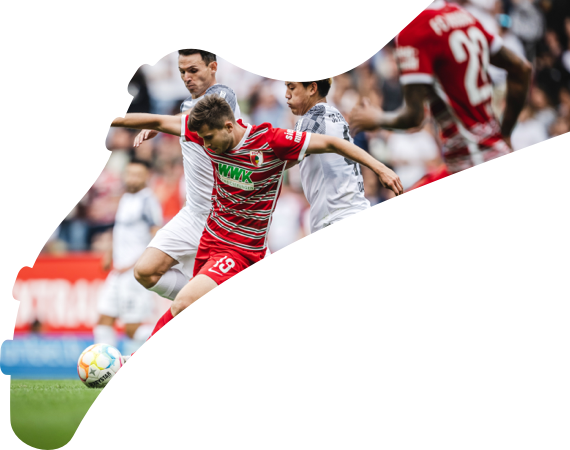
Tactics corner: How might Borussia Dortmund approach Der Klassiker against Bayern Munich
Borussia Dortmund visit Bayern Munich on Matchday 27 for another tantalising Klassiker encounter. So, how might Edin Terzić set up his team to try and get one over the defending Bundesliga champions?
Which Dortmund players will you choose for Fantasy in Klassiker week?
After what was clearly a disappointing first half of the season, Dortmund hit the reset button over the winter break. They brought in two new assistants to help Terzić in Sven Bender and Nuri Şahin. BVB also signed Ian Maatsen on loan to plug the troublesome left-back spot, but the Dutchman has done more than just that by helping add greater flexibility to the team’s build-up play.
A tactical look at Maatsen’s impact on Dortmund
However, that doesn’t mean that their new system of build-up play has been perfected. When under less opposition pressure, Dortmund tend to resort to a flat 4-1 in build-up, with Emre Can the one holding midfielder in front of the back four. The idea here is that the two centre-backs – most recently Niklas Süle and Nico Schlotterbeck – should either play long vertical balls or set the full-backs away down the flanks.
Building up with a back four and holding mid
Together with the wingers, it creates two-v-two situations down the sides of the penalty area as they look to cross or dribble into the middle. It means Borussia look to get forward quickly and play the ball into the box. Speed and quantity matter more here than the quality of the chances.
That’s because rapid attacking play sees the equally quick wingers of Donyell Malen, Jadon Sancho or recently also Karim Adeyemi get in behind the back line and in on goal. Malen’s 11 Bundesliga goals this season (13 in all competitions) have often been the result of these raiding attacks.
However, this approach can struggle when opponents sit deep. The same is true when opposition teams press high and in volume. It means the centre-backs play with a greater risk, both due to their vertical passes and advanced full-backs should they lose possession.
In-play changes
To try and solve those issues, Can will often drop deeper, between the two centre-backs to form a back three and build up the play from there. As a natural central midfielder, he’s used to being pressed and boasts a Pressure Handing of 69 percent. He’s capable of operating in tight spaces and is a factor in adding stability to that back three.
To ensure there are no gaps in midfield, left-back Maatsen moves into the centre to act as cover. The box-to-box midfielder, mostly Marcel Sabitzer, drops alongside him to add his excellent distribution to the mix and provide further balance.
A key element missing
However, Terzić will have to make do without Sabitzer for Der Klassiker as the Austrian serves the second game of a three-match suspension. The versatility provided by the summer addition from Bayern has been a key factor thus far in Dortmund’s ability to switch to that 3-2 build-up system. When BVB played with the more attacking duo of Julian Brandt and Marco Reus alongside Can last time out against Eintracht Frankfurt, they struggled in their 4-1-4-1 system, until they dropped Brandt a little deeper.
Things suddenly improved, Dortmund were able to retain possession and draw Frankfurt in, creating space for those attacks in behind. The Brandt-Reus combination could prove too open against Bayern, meaning Salih Özcan is a likely contender to replace Sabitzer.
Build-up, dribble, gegenpress
An almost perfect example of these mechanics at play could be seen against Freiburg on Matchday 21. With the visitors pressing high early on, Can dropped into the back line to secure possession. Coming forward, Maatsen came into the centre from the left, followed by right winger Roland Sallai and therefore creating space for Schlotterbeck to go forward down the left and ease the pressure.
Schlotterbeck then continued with the ball and saw a pass into the final third. His through ball was again like an ambush. Malen wasn’t able to control it, with Freiburg’s Nicolas Höfler applying pressure. But this was by no means the end of their attack.
Terzić football means ambush
Dortmund immediately deployed a counter-press, with Sabitzer getting between opponents and snatching the loose ball. Sabitzer then played in Niclas Füllkrug, who held up the ball before teeing up Malen to open the scoring.
Similarly, in the Frankfurt game, the first goal also came from one of those ambushes. Dortmund drew the opponent out to the left, Schlotterbeck pinged a diagonal ball out to Malen on the right and the Dutchman breezed past left-back Niels Nkounkou before squaring for Adeyemi to finish their quickfire attack.
The Füllkrug Factor
Dortmund are also excellent on the counter-attack, boosted by those players with tremendous pace, and the link-up play of Füllkrug. Terzić could opt for the quicker Youssoufa Moukoko up front - a thigh injury means the same expirement can't be tried with Malen this time - but the coach has persisted with Füllkrug.
That’s because his style of play is vital to BVB’s method. By using Füllkrug as a focal point, Dortmund's flying widemen are brought into the game more frequently and have someone who can bring them into the game. Füllkrug in theory is there to play others in, with his eight assists – the most of any centre-forward in the Bundesliga – far more impressive than his 11 goals.
Few players are as good as holding up the ball as the Germany international and Füllkrug’s ability to play in this system is even more important given the fact that Sébastien Haller has been unable to build on the form he showed at the back end of last season.
Challenges posed by Bayern
Dortmund’s approach when out of possession has varied lately. Their starting formation has always been a 4-2-3-1, but the method has then changed depending on the opponent. We’ve often seen Malen on the right be far more aggressive in pressing than his opposite number on the left, looking to get at the opposition left-back. Up against Werder Bremen, you could see a clear 4-2-3-1, but while Malen and Füllkrug pressed the Bremen back three, Sancho on the left would drop back and cover right wing-back Mitchell Weiser. Over on the right, that was the job of full-back Julian Ryerson.
But what’s also been noticeable is that Dortmund have often looked to shore things up with a back three that converts into a five. In Der Klassiker, they are in the unusual role of underdogs and will therefore have to consider how they will defend against the might of Bayern’s attack. The defending champions have often played in a 3-1-4-2 formation when going forward, looking to attack with six players.
Terzić could utilise the versatility of Süle in order not to lose those patterns they’ve worked on. The centre-back can operate like right-back Ryerson in possession, with Mats Hummels starting at right centre-back instead. Against the ball, however, Süle would then shift back into the three-man central defence.
Freiburg and Bayer Leverkusen both delivered strong defensive displays against Bayern with this hybrid variant of a five-man defence against the ball and a four-man defence with the ball. Using these games as a template for their own success may well aid the Dortmund cause.
Related news

Bundesliga 2, Matchday 19 overview
HSV cemented top spot with a late win at Hertha, Düsseldorf staged a comeback for the ages at Karlsruhe and Schalke beat Nuremberg.

Schlotterbeck's late header secures Augsburg win
Augsburg snatched a dramatic 2-1 late victory over Heidenheim to pull further clear of the relegation zone.

Gladbach comfortably beat Bochum
Tim Kleindienst got a goal and an assist as Gladbach secured their first win of 2025 in convincing style.


